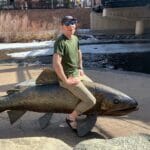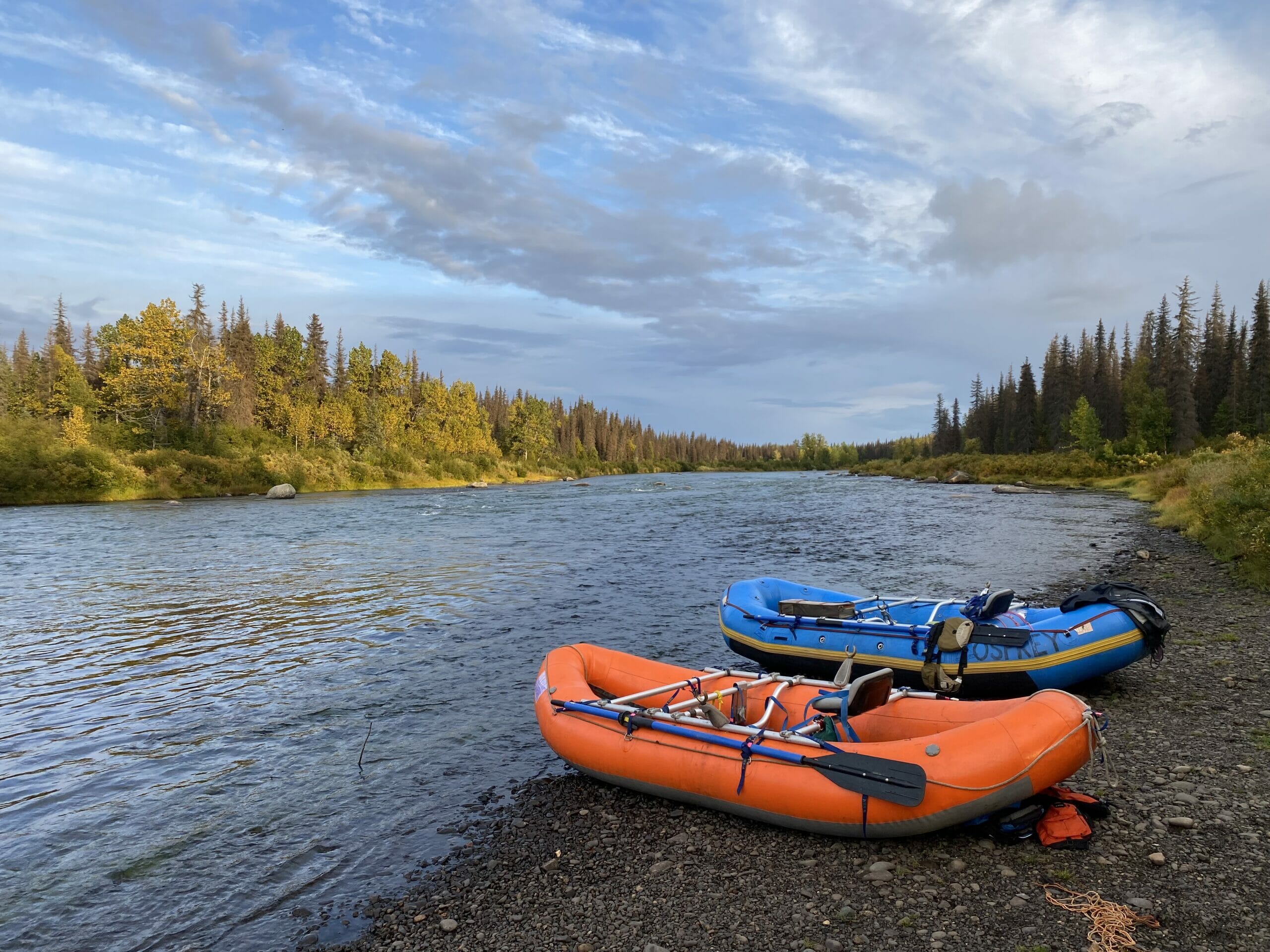Rafts ready and waiting to be loaded back up for the day ahead. Photo credit: Eric Booton
Airborne, we crossed Cook Inlet and began tracing the Susitna River north. My twin sister, Shauna, rode co-pilot in a Cessna 206 atop floats. Moose meandered wetlands and swans dotted water bodies below. In every direction, rivers transected the landscape while glaciers and notorious summits bobbed about in the distance.
Together with two friends, we were bound for Lake Creek, a renowned Alaskan wilderness float destination. We’d spend the next five days fighting rapids and fish on one of Alaska’s officially recognized Recreational Rivers.
Having rafted several remote rivers in Alaska, and in the company of skilled partners that I trust, I felt well prepared for the trip ahead. However, I was entirely unprepared for the intense beauty of Lake Creek’s headwaters, Chelatna Lake, as it stole the horizon.
The 7-mile-long lake is the largest in the Matanuska-Susitna Valley, and from my vantage point above, every inch of it is enchanting. After we touched down and cut across glassy water, we were greeted at the lake’s outlet by sockeye salmon, sporting vibrant spawning colors and dancing over redds as our boats drifted by. Right on cue, rods in both rafts were bent and the first fish of the trip were caught, celebrated, and released.
Choked up, the outlet of the lake quickly picked up steam as we drifted past the threshold from lake to creek. With bulging boulders and subsurface sweepers requiring quick maneuvering around every corner, Lake Creek didn’t skip a beat in giving us a taste of its character. Suddenly, the advice a friend gave me before the trip echoed in every corner of my mind: “make sure you have more than one strong rower in each boat”.
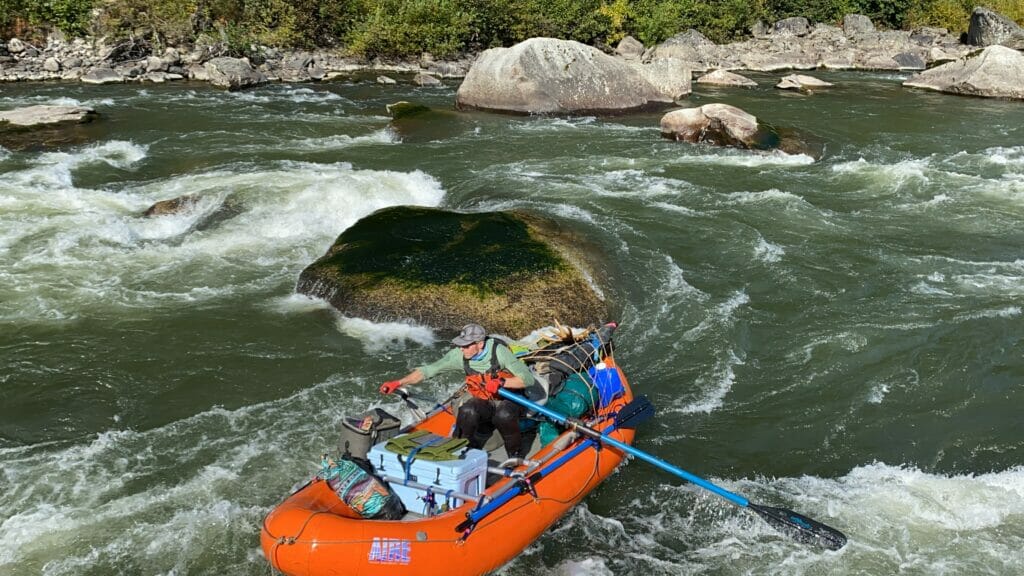
Lake Creek is one of six rivers in the Susitna River basin designated as a “Recreational River” by the Alaska State Legislature in 1988, ensuring recreational access along a mile-wide corridor along the river for public and recreation access. The Susitna Basin Recreational Rivers plan was created in 1991 to preserve the important characteristics of these rivers and the diverse recreation opportunities they host.
Lake Creek and its fellow Recreational Rivers in the Susitna Basin are reserved under the Alaska Constitution for a special purpose, and each of the rivers features its own management plan to maintain its recreation opportunities.
During the 2021 Legislative Session, a bill was introduced into the state’s senate by Alaska Governor Mike Dunleavy to repeal the Susitna Basin Recreational Rivers Plan. Motivated by a desire to pave the way for access by resource extractive industries, including speculative and highly subsidized mining projects and the West Susitna Access Road, Senate Bill 97 would jeopardize the health of, and access to, six of the region’s most important rivers for recreational users, hunting and fishing lodges, and other recreational industries.
Lake Creek is 54 miles long, and the first 46 miles are class II and sustained class III rapids, with two class IV sections. The most noteworthy of the latter is “The Drop,” which is clearly called out in every guidebook and brought words of caution from every boater I’d talked to prior to this trip.
Below the canyon, the riverbed widens and Lake Creek becomes more subdued, class I water. As we floated by, salmon carcasses lined the banks and the stench of rotting flesh took hold in our sinuses. We spotted a brown bear with a salmon snack dangling from its jaws and turned the corner to find a black bear performing a balancing act across a downed cottonwood.
The eddies and soft water were stacked with crimson coho bound for upstream spawning beds. Pulling off on a fishy-looking bend, we saw unmistakable signs of life in every direction. On Shauna’s first cast, she found the famous Alaska trout fishing we had all hoped for.
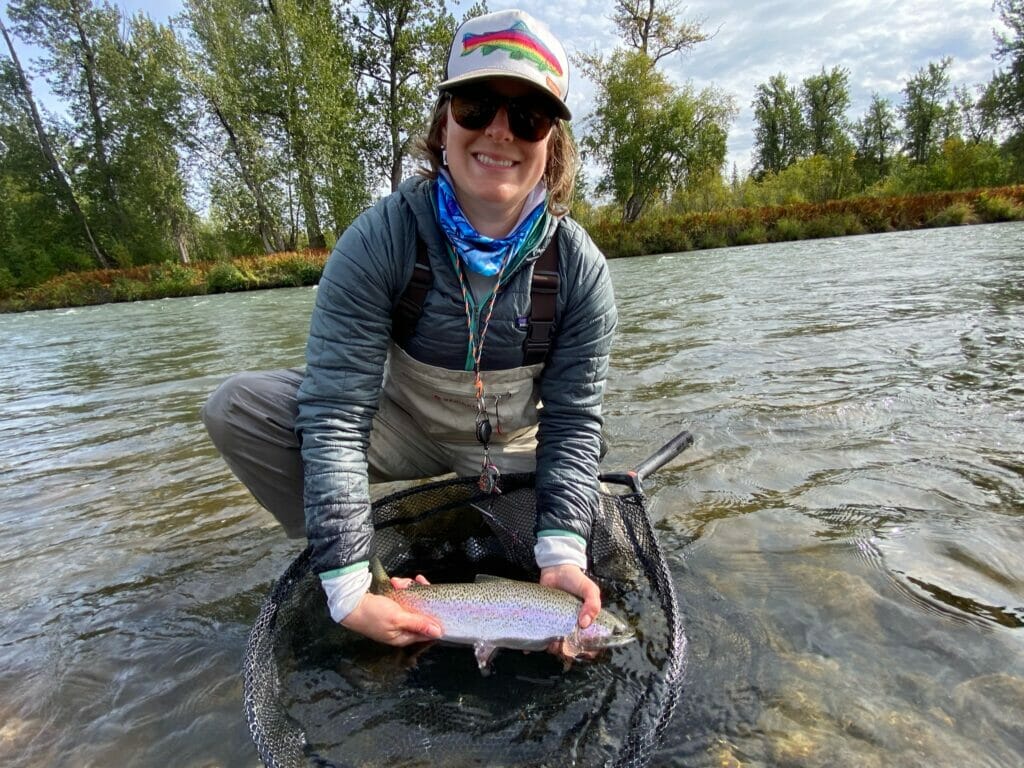
With spawning chum salmon in sight, nearly every cast connected with a wild Alaska rainbow trout, and all effort to control our excitement was abandoned. We were four grown humans giggling with the feverish intensity of toddlers, an extraordinary reward for the 46 miles of river we had already run.
It wasn’t long before each of us had caught and released more trout than we could count. Quite content, we tied on mouse patterns, upping the challenge and intensifying the giggles to hollers.
As the story of nearly every river trip goes, our time on Lake Creek wasn’t long enough. Lounging with the stars and listening to an owl’s hoot around the fire in our final camp, feeling rejuvenated and inspired with our fishing desires long fulfilled, we couldn’t help celebrating our good fortune while wishing for another day living the lives’ we love on one of Alaska’s designated “Recreational Rivers” in good company.
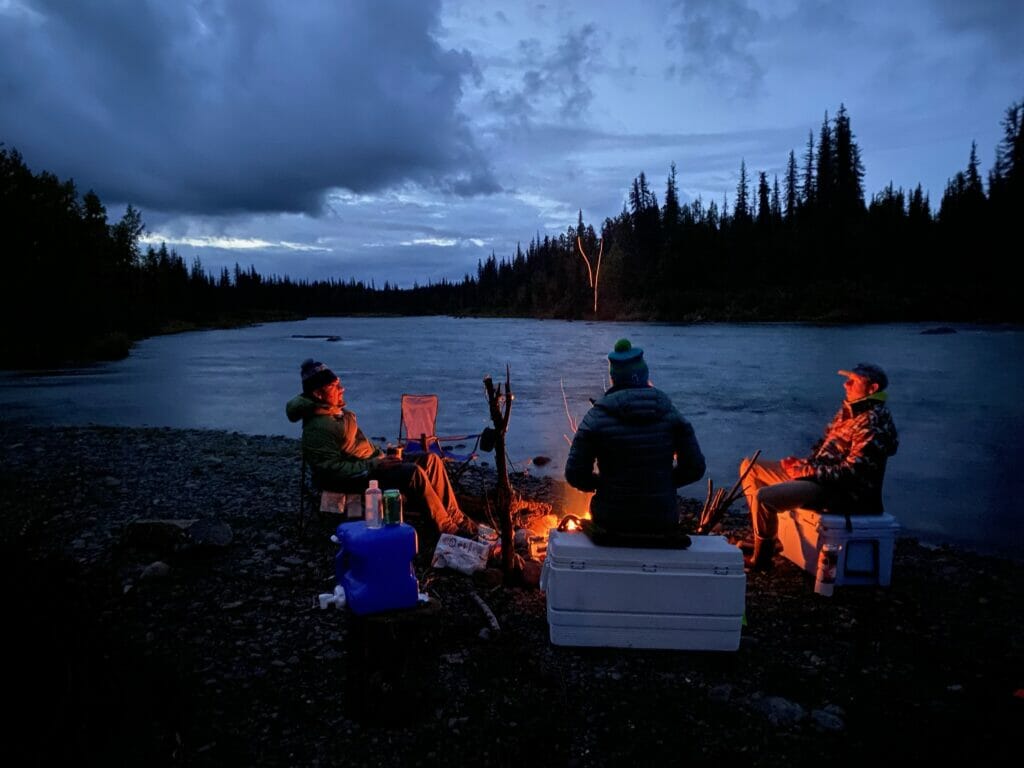
While we didn’t see another human on our trip, an occurrence I deem fortunate, the boot prints left behind by others and jet boats tightly tucked in the brush by remote cabin owners hint at this river’s value to Alaskans.
The attack on the Recreational Rivers of the Susitna Basin hasn’t been successful yet, but many hunters, anglers and Alaskans are angered by the notion that they would be targeted.
The Susitna Basin Recreational Rivers Management Plan was created through the collaboration of agencies, organizations, and the legislature, along with the contributions of thousands of individual Alaskans. The plan promotes stewardship of the area and is a gift to future residents who will inherit these wild rivers.
This is Alaska, a big state with an even bigger reputation, and a big prize for many industries. Repealing the Susitna Basin Recreational Rivers Management Plan would limit public access and jeopardize the health of some of our most prized rivers, while prioritizing the remote west-Susitna region for resource extraction industries over the public interest. Consider me among the many Alaska anglers and hunters up in arms over our governor’s short-sighted suggestion.


